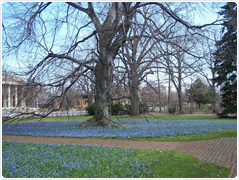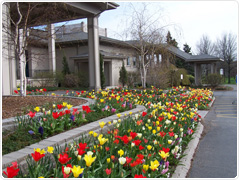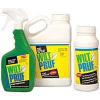Tips for Fall Gardening

Fall is the time to transplant, divide and give away perennials that you have in abundance.
→ After the first hard frost most perennials will die back or begin to turn brown so they can be cut back. Exceptions are chrysanthemum, caryopteris, butterfly bush and ferns. Instead cover these with a generous pile of fall leaves for added winter protection.
→ Compost all plant debris that is not diseased. Ones to keep on eye on are Hollyhock, Beebalm, Roses and Phlox. These tend to get powdery mildew and the roses get black spot as well. Many foliar disease will over winter in the dead foliage and infect your plants again in the spring.
→ If the fall is dry don’t forget to continue watering until the ground freezes. You don’t want your evergreens to go into winter dehydrated. Dehydration increases their chances of desiccating over the winter known as winter burn.
→ Don’t forget to continue weeding. The cleaner your garden is in the fall the cleaner it will be in the spring.
→ If you have evergreens, especially broad leaf, in windy areas consider an application of Wilt Proof for winter protection. This product coats the leaves and helps to prevent excessive transpiration brought on by winds, keeping the plant hydrated and less likely to experience winter burn. You will need to do this before freezing temperatures. Trees which you often see winter damage on can also benefit from a little spray such as Dogwood, Star Magnolia and Weeping Japanese Maples. Spray the branches after the leaves have fallen where you can see bud set for next season. These are what you are protecting, the new leaf buds and flower buds. In some cases if you are familiar with an area you don’t have to actually spray the whole tree, just the side facing the wind.
→ Fall is also a great time to get new beds ready for next year. If your soil is poor add lots of compost and create a raised bed, with or with out edging. Cover with a thick layer of mulch to keep down weed this fall and in the spring. You can use grass clipping (if not treated with herbicides), fall leaves or even shredded bark mulch or a combination there of as long as the bark is on top. Then in the spring every thing will be ready for planting and you can get right to it!
→ Obviously this is the time to plant bulbs for spring color. Think back to the spring and what you admired in others gardens. Plant in clusters of odd numbers of five or larger to get the desired effect in the spring. Naturalize you lawn with early flowering bulb such as Snow drops, Crocus, Winter Aconite and Glory-in-the-Snow. Use Scilla in areas that don’t receive a lot of summer water such as under large trees. These flowers will be gone before your even think about your first mowing and they’re such a burst of color and happiness when everything else is gray and rainy at the end of March and beginning of April.
→ It’s also time to lift your tender bulbs. Dig Caladium and Elephant’s Ear before the frost and Gladiola, Dahlia and Canna when the frost kills the leaves. Store them in a cool, dry place. Actually I’ve had great success planting Canna in pots and just stuffing them in the basement over the winter. In the spring I drag them out, start watering and fertilizing them and the sprout up and have actually multiplied – just like Amarylis.
→ Not all of your annuals need to be pulled and disposed of, some can actually survive in small micro-climates where it stays a little warmer in the winter. Think of any place that has a lot of reflect sunlight and warmth such as a cement block or brick foundation or garage. I have tremendous success with dusty miller and snapdragons. I’ve even had gladiolas come up and multiple for five years before a really bad winter knock them out and I have a friend with a beautiful calla lily that thrives.
→ Don’t forget to let your annual go to seed before you pull them if you like what we call “volunteers” in the spring. Alyssum, cleome, snapdragons, lobelia, cosmos and nasturtium seed will come up in the spring. But you can’t use Preen in those areas. Don’t forget your biennials either. Sweet William and Hollyhocks reseed readily.
→ Use those leaves!!! I’m sure there are areas in your landscape that can benefit from a nice layer of leaves. You perennials beds like to be covered in leaves as well as your rose bushes for winter insulation. Hydrangea macrophyla, caryopteris and butterfly bushes will benefit from extra insulation too. Shredded leave make a nice mulch that will decompose over the winter and improve your soil texture. If you don’t have a place in the landscape for fallen leaves, throw them in a pile somewhere and they will start to decompose over the winter. Soon you will be able to use the result as a soil amendment and top dressing.
→ Don’t forget to burry your tree roses or provide other means to protect that graft.
→ For the ambitious who have a decent winter light source many annuals can be over wintered in the house. Coleus, spikes, asparagus fern, wax begonias, cane-stem begonias, potato vine, vinca vine, and geraniums are suggestions of what can easily over wintered provide enough light. Coleus, vinca vine, cane-stemmed begonias and geraniums can be easily propagated by cutting in the spring to make more plants.
→ If you enjoy starting seeds in the spring indoors or outdoor collect seed from your annuals to start next year. Keep in mind which are hybrids because they will not be true to the parent plant next year, their characteristics will tend towards one of the hybrid parents. (Though sometimes it’s just fun to see what comes up.) I usually collect ageratum, calendula, cleome, annual salvia, columbine, marigold, nasturtium, snapdragon, borage, castor bean and love-in-the-mist just to name a few.
→ After the first hard frost most perennials will die back or begin to turn brown so they can be cut back. Exceptions are chrysanthemum, caryopteris, butterfly bush and ferns. Instead cover these with a generous pile of fall leaves for added winter protection.
→ Compost all plant debris that is not diseased. Ones to keep on eye on are Hollyhock, Beebalm, Roses and Phlox. These tend to get powdery mildew and the roses get black spot as well. Many foliar disease will over winter in the dead foliage and infect your plants again in the spring.
→ If the fall is dry don’t forget to continue watering until the ground freezes. You don’t want your evergreens to go into winter dehydrated. Dehydration increases their chances of desiccating over the winter known as winter burn.
→ Don’t forget to continue weeding. The cleaner your garden is in the fall the cleaner it will be in the spring.
 |
→ Fall is also a great time to get new beds ready for next year. If your soil is poor add lots of compost and create a raised bed, with or with out edging. Cover with a thick layer of mulch to keep down weed this fall and in the spring. You can use grass clipping (if not treated with herbicides), fall leaves or even shredded bark mulch or a combination there of as long as the bark is on top. Then in the spring every thing will be ready for planting and you can get right to it!
→ Obviously this is the time to plant bulbs for spring color. Think back to the spring and what you admired in others gardens. Plant in clusters of odd numbers of five or larger to get the desired effect in the spring. Naturalize you lawn with early flowering bulb such as Snow drops, Crocus, Winter Aconite and Glory-in-the-Snow. Use Scilla in areas that don’t receive a lot of summer water such as under large trees. These flowers will be gone before your even think about your first mowing and they’re such a burst of color and happiness when everything else is gray and rainy at the end of March and beginning of April.
→ It’s also time to lift your tender bulbs. Dig Caladium and Elephant’s Ear before the frost and Gladiola, Dahlia and Canna when the frost kills the leaves. Store them in a cool, dry place. Actually I’ve had great success planting Canna in pots and just stuffing them in the basement over the winter. In the spring I drag them out, start watering and fertilizing them and the sprout up and have actually multiplied – just like Amarylis.
→ Not all of your annuals need to be pulled and disposed of, some can actually survive in small micro-climates where it stays a little warmer in the winter. Think of any place that has a lot of reflect sunlight and warmth such as a cement block or brick foundation or garage. I have tremendous success with dusty miller and snapdragons. I’ve even had gladiolas come up and multiple for five years before a really bad winter knock them out and I have a friend with a beautiful calla lily that thrives.
→ Don’t forget to let your annual go to seed before you pull them if you like what we call “volunteers” in the spring. Alyssum, cleome, snapdragons, lobelia, cosmos and nasturtium seed will come up in the spring. But you can’t use Preen in those areas. Don’t forget your biennials either. Sweet William and Hollyhocks reseed readily.
→ Use those leaves!!! I’m sure there are areas in your landscape that can benefit from a nice layer of leaves. You perennials beds like to be covered in leaves as well as your rose bushes for winter insulation. Hydrangea macrophyla, caryopteris and butterfly bushes will benefit from extra insulation too. Shredded leave make a nice mulch that will decompose over the winter and improve your soil texture. If you don’t have a place in the landscape for fallen leaves, throw them in a pile somewhere and they will start to decompose over the winter. Soon you will be able to use the result as a soil amendment and top dressing.
→ Don’t forget to burry your tree roses or provide other means to protect that graft.
→ For the ambitious who have a decent winter light source many annuals can be over wintered in the house. Coleus, spikes, asparagus fern, wax begonias, cane-stem begonias, potato vine, vinca vine, and geraniums are suggestions of what can easily over wintered provide enough light. Coleus, vinca vine, cane-stemmed begonias and geraniums can be easily propagated by cutting in the spring to make more plants.
→ If you enjoy starting seeds in the spring indoors or outdoor collect seed from your annuals to start next year. Keep in mind which are hybrids because they will not be true to the parent plant next year, their characteristics will tend towards one of the hybrid parents. (Though sometimes it’s just fun to see what comes up.) I usually collect ageratum, calendula, cleome, annual salvia, columbine, marigold, nasturtium, snapdragon, borage, castor bean and love-in-the-mist just to name a few.
September 29, 2010
|
View: 1584







